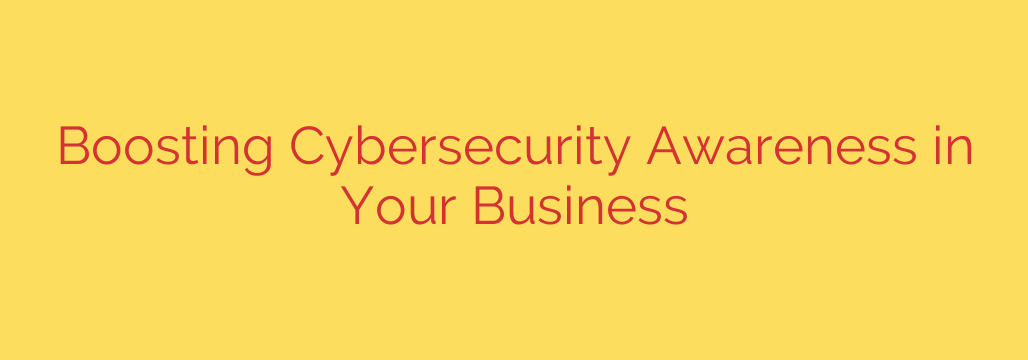
Fortify Your Defenses: How to Build a Cyber-Aware Workforce
In today’s digital landscape, the biggest threat to your business’s security isn’t a complex piece of code or a sophisticated hacking tool. It’s the human element. While firewalls and antivirus software are essential, they can’t protect you from an employee who unknowingly clicks a malicious link. This is why building a strong culture of cybersecurity awareness is no longer optional—it’s a critical business function.
A single lapse in judgment can lead to a devastating data breach, resulting in significant financial loss, reputational damage, and legal consequences. Your employees are your first and last line of defense. Equipping them with the knowledge and mindset to recognize and respond to threats is one of the most effective security investments you can make.
The Foundation: Moving Beyond One-Time Training
Annual, check-the-box security training is simply not enough to combat the ever-evolving tactics of cybercriminals. To truly build a resilient “human firewall,” you need a dynamic and continuous approach.
Here are the core strategies for creating a security-minded team:
Implement Continuous and Engaging Education: Security training should be an ongoing conversation, not a yearly lecture. Use a variety of formats to keep it fresh: short video modules, interactive quizzes, and regular security newsletters. Focus on real-world scenarios that employees can relate to their daily tasks. When training is relevant and engaging, the lessons stick.
Run Realistic Phishing Simulations: The best way to learn how to spot a phishing attempt is to practice. Regularly send simulated phishing emails to your staff. These controlled tests help employees recognize the tell-tale signs of a scam in a safe environment. The goal isn’t to trick or shame employees, but to educate them. Use the results to identify knowledge gaps and provide targeted follow-up training.
Develop Clear and Accessible Security Policies: Employees can’t follow rules they don’t understand or can’t find. Your security policies—covering everything from password creation and data handling to using public Wi-Fi—must be written in plain language and be easily accessible to everyone. A well-documented policy is a roadmap for safe behavior.
Foster a “No-Blame” Reporting Culture: Many employees hesitate to report a security mistake for fear of punishment. This silence can turn a small incident into a major crisis. It is vital to cultivate an environment where employees feel safe to report suspicious activity or potential errors immediately. Emphasize that quick reporting is the most helpful action they can take, allowing your IT or security team to mitigate the threat before it escalates.
Actionable Security Habits for Every Employee
Beyond formal training, promoting good daily security hygiene is crucial. Encourage your team to adopt these essential practices:
Practice Advanced Password Hygiene: Advise employees to use strong, unique passwords for every account. A password manager can make this easy. More importantly, mandate the use of Multi-Factor Authentication (MFA) wherever possible. MFA adds a critical layer of security that can block the vast majority of account takeover attempts.
Scrutinize Every Email: Teach your team to be inherently skeptical of unsolicited emails, especially those creating a sense of urgency, promising rewards, or asking for sensitive information. Key things to check include the sender’s email address (not just the display name), hovering over links to see the true destination, and watching for grammar or spelling errors. The rule of thumb should be: “When in doubt, throw it out” or report it.
Secure Remote Work and Public Wi-Fi: With the rise of remote and hybrid work, security perimeters have dissolved. Instruct employees to use a Virtual Private Network (VPN) when connecting to company resources, especially when using public or untrusted Wi-Fi networks. A VPN encrypts their internet traffic, protecting sensitive data from eavesdroppers.
Lock Screens and Secure Devices: This is one of the simplest yet most effective habits. Remind everyone to lock their computers when they step away from their desks, even for a moment. Similarly, company-issued mobile devices should be password-protected and have remote wipe capabilities enabled in case of loss or theft.
Ultimately, strengthening your cybersecurity posture is a shared responsibility. By investing in comprehensive awareness training and fostering a vigilant culture, you empower every employee to become an active defender of your business’s most valuable assets.
Source: https://kifarunix.com/top-ways-to-raise-cybersecurity-awareness-in-your-business/








